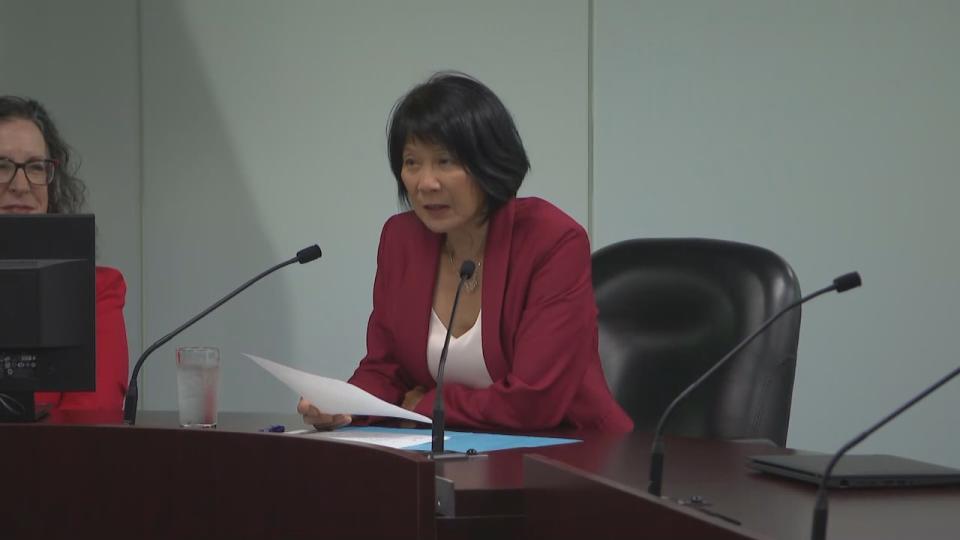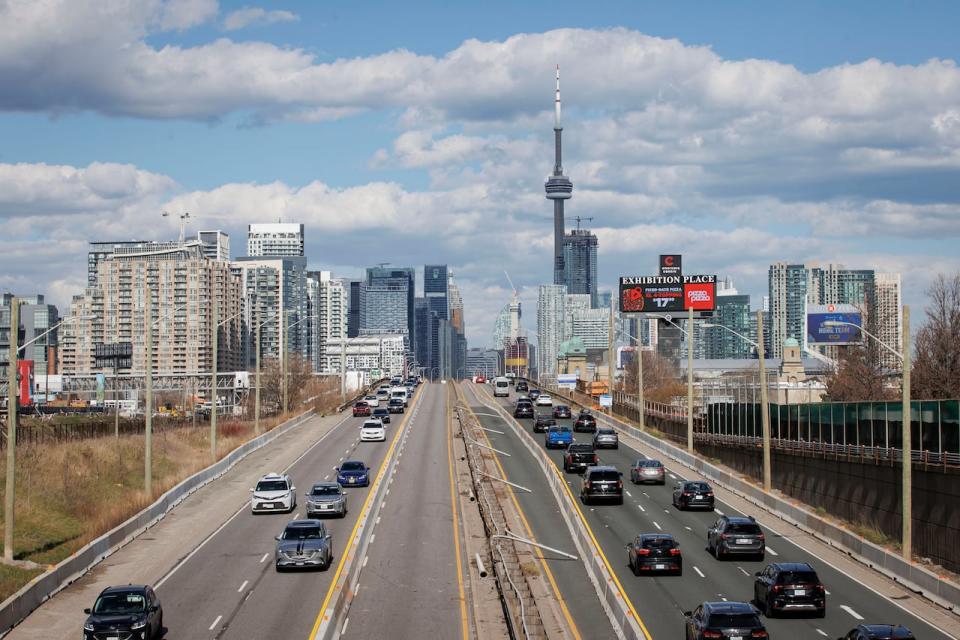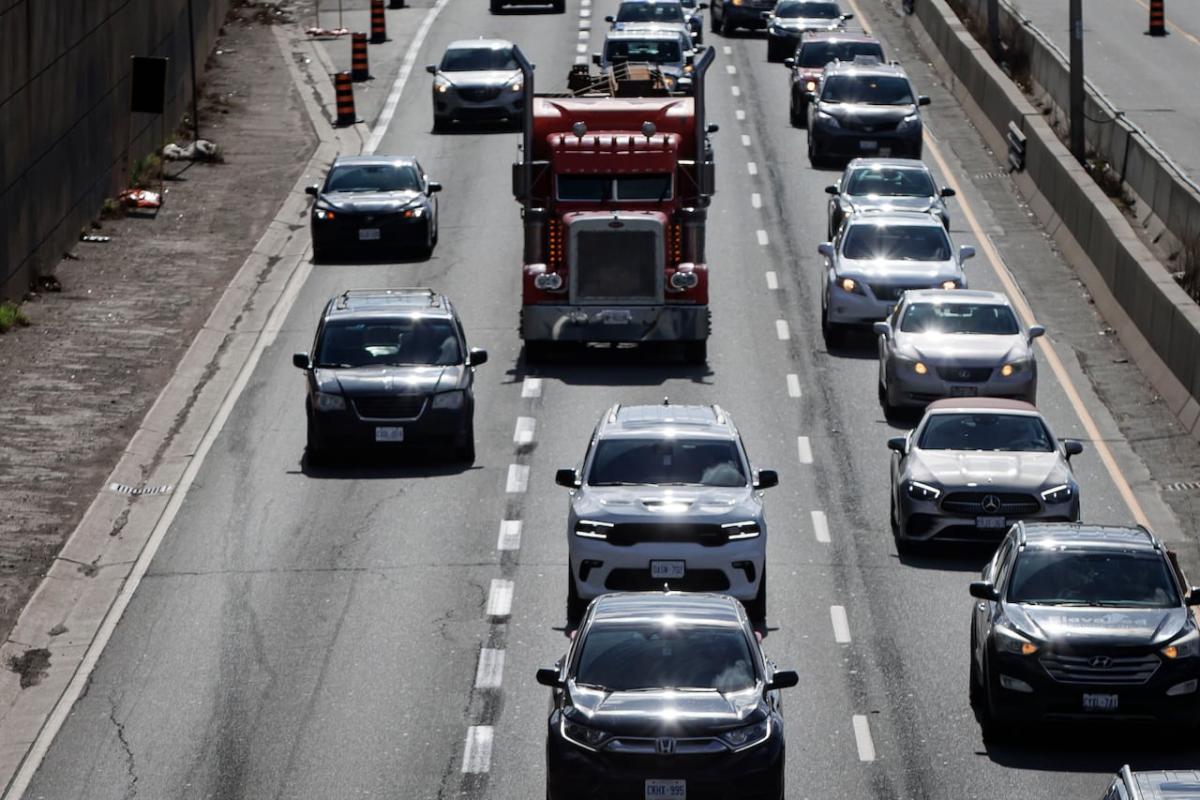City officials have revealed their latest plans to tackle traffic congestion in Toronto — with the help of some proposed fines and fees.
Toronto Mayor Olivia Chow told reporters at a briefing Friday that the city wants to address bad behaviour on city streets. As a growing city, Chow said Toronto has about 250 cranes in the sky, but that means a lot of construction, cars and traffic.
The mayor said the city will take steps to speed up construction on major streets, better coordinate road closures, shorten closures and improve enforcement against drivers who violate the rules.The city also wants to impose a new congestion management levy on builders who occupy lanes to encourage them to speed up construction, she said.
Her message to developers who might complain if they face a new fee: “Do it faster.”
Chow said congestion is made worse by drivers who park in bike lanes illegally, and those who stop in live lanes with their hazard lights on, snarling traffic behind them.
“Maybe they just got a Timmies, I don’t know. Or they just delivered something. It’s illegal, it’s just maddening,” she said.
Chow also said she wants the city to use its arsenal of traffic cameras and TTC vehicle cameras to ticket rule breakers.
“We are public servants. We do not violate people’s privacy. But if you break the law, we need to catch you,” she said.
The city has already increased fines for drivers who stop in intersections when lights change. “Blocking the box” is now a $450-fine, an increase from $90. The fine for an improper stop at an intersection has also been raised for community safety zones, from $120 to $500.
‘Not about making cars disappear,’ official says
Roger Browne, director of traffic management for the city, said the city’s congestion management plan aims to ease the flow of traffic around Toronto, improve the reliability of transit, make travel more efficient and improve road safety.
City staff have updated the congestion plan and will update the council’s infrastructure and environment committee on Sept. 27. The plan will then go to city council in October.
“When it comes to congestion management, I mean, this is not about making cars disappear,” Browne told reporters. “This is about better, more effectively managing congestion.”
Browne said the city is also looking at setting up automated enforcement to monitor traffic violations, developing a new road restrictions map and creating a new traffic congestion dashboard.

Toronto Mayor Olivia Chow speaks to reporters at a city hall briefing on an update to the city’s congestion management plan. (CBC)
Barbara Gray, general manager of the city’s transportation services, said construction projects need to get done.
“I think we’ve all seen what happens when we don’t do sewer projects and water main projects in a timely fashion. We get collapses. And when those happen, then we have to manage that as an emergency work,” Gray said.
Coun. Brad Bradford, who represents Beaches-East York, said congestion is a major issue in Toronto that councillors hear about from constituents frequently, but he is not a fan of the levy on construction companies.
“I think we could also look at incentivizing folks to get those construction projects done quicker, whether that is lessening fees on permits for work that is completed faster, finding a way to incentivize the type of behaviour that we want to see when it comes to our contractors to get things done faster, because that’s what the priority has to be,” he said.


A view of Toronto from the Gardiner Expressway. (Evan Mitsui/CBC)
In a report that will be considered by the council committee, city staff pointed to construction stemming from private development, infrastructure renewal and major transit lines being built.
“While the economic benefits of growth will deliver long-term value to the residents and businesses in the city, the impacts of construction are having a direct impact on network capacity and neighborhood mobility,” the report says.
The report goes onto say that changes in travel patterns following the pandemic, more people back in office buildings and attending events on weekends also play a role in congestion.
“In short, construction has increased, travel patterns and habits have changed, the city population continues to grow and, as a result, overall congestion is having a significant impact on people’s daily lives and travel.”
The report says the problem is complex and requires “comprehensive and nimble approaches to planning and coordination.”
City staff lay out five key actions as part of their plan:
-
Better coordination and control over construction activities on right-of-ways.
-
Automated enforcement to monitor bylaw infractions, such as blocking intersections, bike lanes and illegal use of dedicated transit lanes.
-
Next steps for the city’s traffic agent program, under which traffic agents are placed at key intersections at morning and afternoon rush hours to manage flow, and continued support from the Toronto police for the program.
-
New framework and methodology to review and approve permits for special events.
-
Increasing fines in support of congestion and safety.

